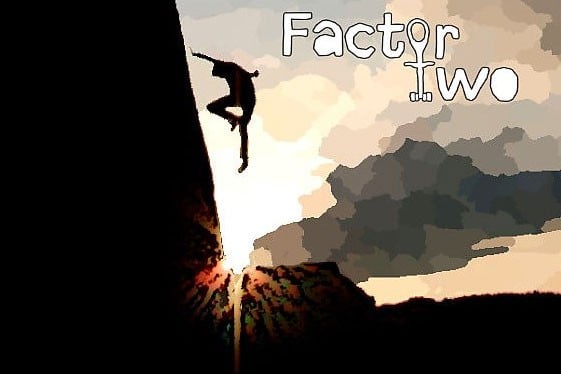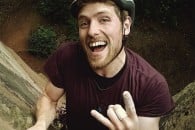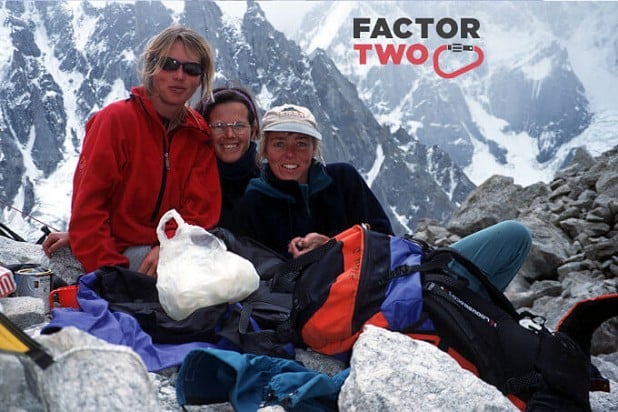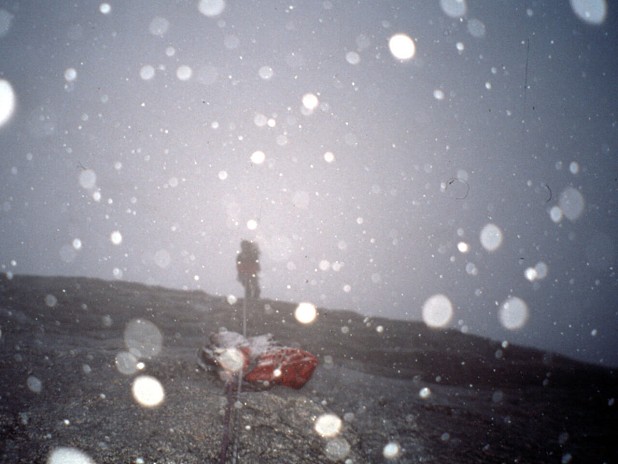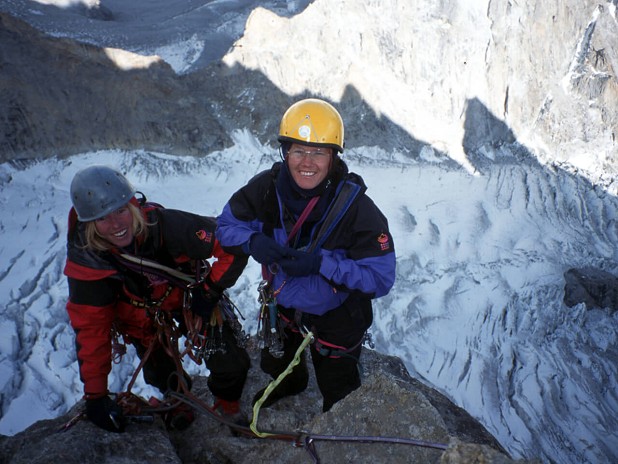Ep.10: Hateja - Louise Thomas and Glenda Huxter
In this Factor Two episode, Wil Treasure speaks to Louise Thomas and Glenda Huxter about their 1997 first ascent of a line on the Himalayan peak Beatrice...
If you had to select your late 90s dream team for a British, all-female Himalayan big wall trip, you couldn't go far wrong with this one. Glenda Huxter was onsighting E7, Kath Pyke had extensive experience on rock and alpine routes, and Louise Thomas brought even more big wall and expedition experience to the team.
Their 1997 objective was a first ascent on Beatrice, by chance the first Himalayan peak named after a woman: British mountaineer Beatrice Tomasson. The south-east face of Beatrice towers over the Charakusa glacier in the K7 region of the Karakoram. The base of the granite wall starts at over 5000m, leading to the summit ridge at around 5800m.
They were joined at base camp by Mike "Twid" Turner (now Louise's husband, who featured in the episode Brave New World), Grant Farquhar and Steve Mayers, who were also attempting a line on the face.
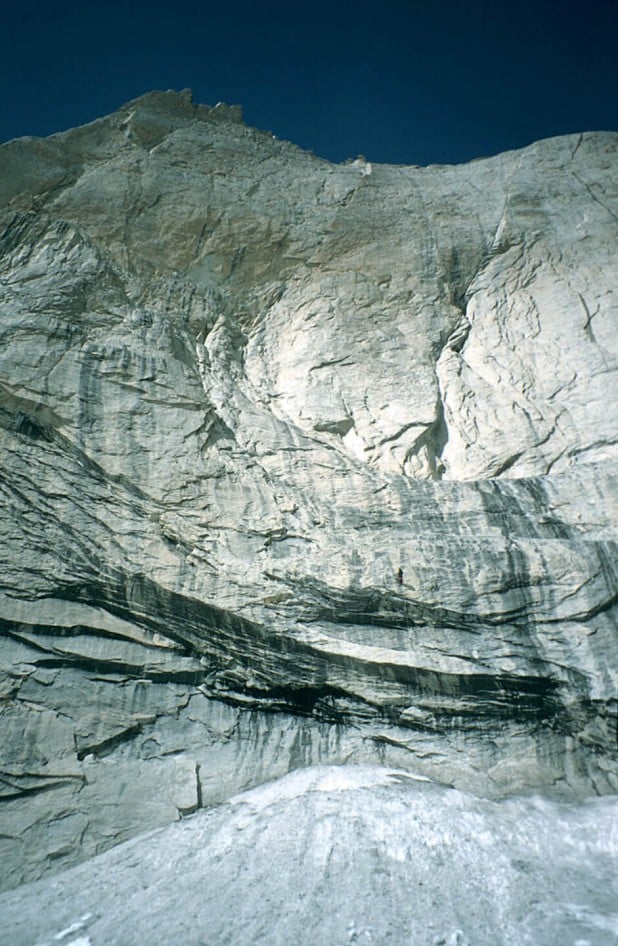
The dream of a pure all-female ascent crumbled fairly quickly when an initial reconnaissance revealed only one line of weakness through the overhangs at the base of the wall. The two teams worked together to overcome this section, with Louise establishing difficult aid pitches, and they found a higher camp above the difficulties for their portaledges.
From this point the men went right and the women left. Over the course of several weeks, they endured poor weather and problems with altitude sickness, but they pressed on. The face was putting up a fight, but the men had found the easier line and eventually topped out on the wall. The summit itself was a dangerous, loose ridge traverse away, so like subsequent teams they avoided it.
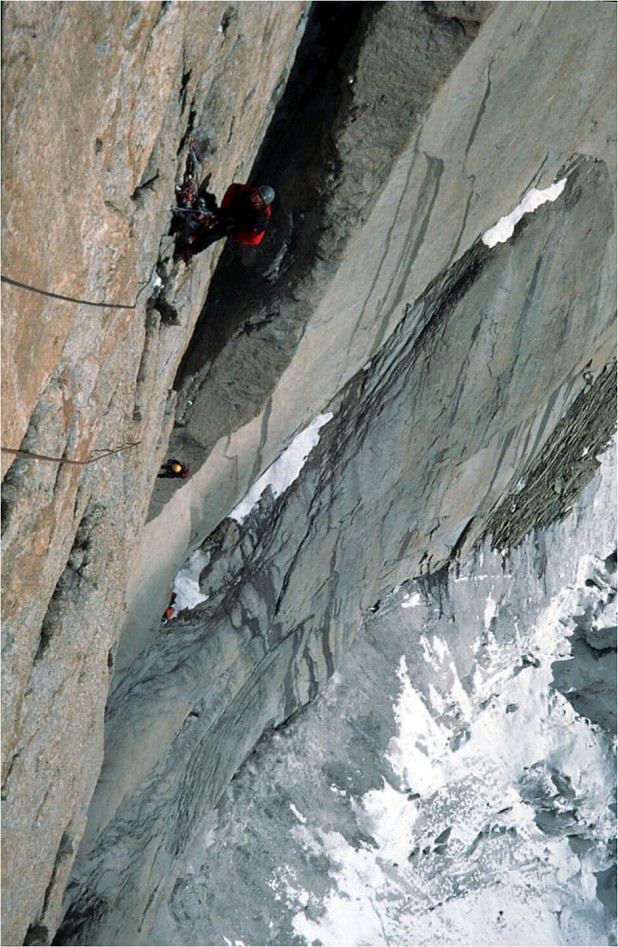
The women were left in a difficult position. They were committed on the wall and had put in weeks of effort to get this far, but time was running out. They had one day left to push for the top.
They formed a plan. With an alpine start, they would press on as far as they could and hopefully make the top before a self-imposed cut-off time, but the weather had other ideas. They woke up to fresh snow and all chances seemed lost, so they zipped up the flysheet and got back into their sleeping bags, resigned to retrieving their gear and making the long abseil retreat.
But luck was on their side after all. Starting later, they headed back up their fixed ropes and, as they neared the top, the weather cleared. They decided to press on to see how far they could get, and the wall started to relent. Their cut-off time came and went, but they kept climbing, determined to make the summit. They made it, late in the day, but elated.
The descent was arduous, with huge haul bags, hundreds of metres of rope and one shredded sheath before reaching their advanced base camp on the glacier.
It's a testament to the determination of the team that they were able to push on right to the end, but also to the talent they had brought to this expedition. They called their route "Hateja", meaning "Strong-willed, determined lady" - a suggestion from their base camp cook - and graded it ED+ A3+ 750m.
In this episode, I spoke to Louise and Glenda about their experience of the expedition and what helped them to dig deep on that final day.
Listen to the episode:
